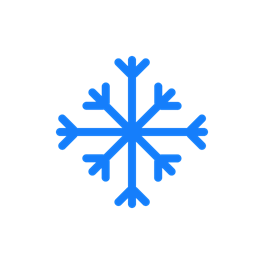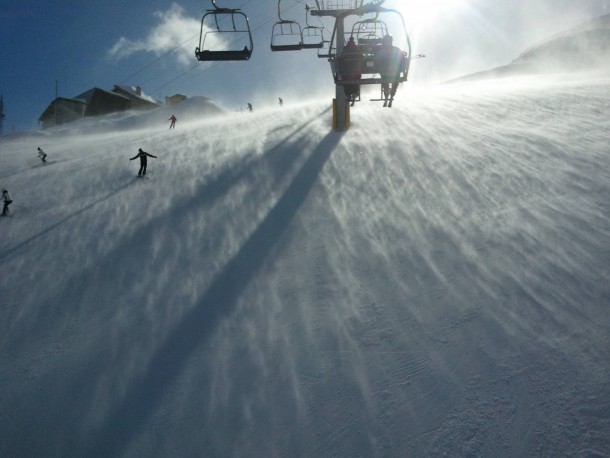In this section, I will discuss the major weather hazards found in skiing to help guide you to make the right decisions when planning for and during a ski trip.















Wind
Wind conditions should be taken into consideration when planning to ski on the mountains. The risks that come from winds increase in relation to increase in wind speeds. When it is windy, skiers may feel what is known as a wind chill, where the relative temperature felt is much colder than the actual temperature of the day because of blowing winds. Wind can also pick up snow powder which can cause further hazards, such as vision obstruction and overhead hazards. Although it is possible to ski in some wind conditions, one must always dress appropiately to avoid instantaneous frostbites and/or hypothermia. In cases where wind speeds are incredibly high, skiers may loose footing and be tossed down the mountains; it is best just to plan another day to ski if this is so.
The strength of winds felt depends on whether one is in a wind-exposed or a wind-sheltered area. In flat areas, friction usually causes wind to slow down. However, in wind-exposed areas like mountain peaks, there is little friction against the wind, resulting in much higher speeds. Wind is dissipated in wind-sheltered areas such as treed areas and in valleys, where friction is larger. However, there can be large clumps of snow on the trees that can be knocked over by wind, causing tree bombs, which are another hazard to be wary of when traversing treed areas.

Wind is somewhat slowed down by friction over flat lands. Source: https://photorator.com/photo/14399/a-windy-day-in-ra-valles-ski-resort-cortina-dampezzo-veneto-italia-Links to an external site.. Accessed May 29, 2019.
Visibility
Clear conditions are optimal for the safety and enjoyment of skiing. However, there are many factors that could limit skiers' ability to see and disorient them, cause them to become lost/separated, or lead them into obstacles. Here are a few conditions that can limit visibility:
Valley Fog: Typically when air is trapped in valleys by a temperature inversion, the moisture in the air can evaporate to form clouds touching the ground, known as valley fog. This makes it dangerous to ski around the bottom of mountains because of the reduced visibility of the valleys. In severe fog, a case known as white out, skiers can only see immediately in front of themselves, making it difficult or even impossible to ski.
Flat Light: When sunlight diffuses through clouds before reaching the ground, it can illuminate the snow in a way that it is difficult to make out its texture. This obscurs visibility because skiers need use snow texture to judge the terrain, otherwise they can unexpectedly run into a mogul, cornice, or cat track that could affect their skiing. Skiers should wear flat light goggles in order to avoid this situation.

Visibility is severely reduced by snowfall and/or fog. Source: http://mountainacademy.salomon.com/en/demo/62/poor-visibility-fog-and-cloudsLinks to an external site.. Accessed May 29, 2019.
Avalanches
Avalanches are masses of snow, ice and rocks that rapidly travel down a mountainside. The cause of avalanches are because of overloading a mountain slope with too much weight and given instability to a slope. A natural or human-made trigger can translate this instability into motion, where human triggers are the higher likelihood of casualties. There are two main categories of avalanches:
Sluff (or Loose-Snow) Avalanches: As the name suggests, these avalanches are comprised of loose snow on a slope surface that is accumulated over their descension, gradually expanding and forming an inverted "V" or bottom-base triangle. Although these avalanches do not usually bury people, they can sweep skiiers off their feet and carry them into obstacles or terrain traps such as gullies or ravines. Skiers can avoid being knocked off their feet after triggering such avalanche by creating a fall line, which is to ski straight down from the starting point of the avalanche and then shift laterally across the slope.
Slab Avalanches: When a layer of snow under the surface of a slope fails, it can fracture the layers above into blocks and slide slide them downhill. These avalanches have a higher risk of burying skiers and causing structural damage. To avoid avalanches like these, skiers should always check avalanche forecasts prior to their trips.
*
A human-triggered avalanche. Source: https://giphy.com/gifs/images-avalanche-qH76W0fhKG6rKLinks to an external site.. Accessed May 29, 2019.
 icons at the top right corner of the subsection.
icons at the top right corner of the subsection.